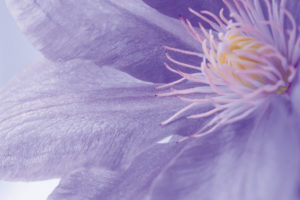Q. I have two tomato plants growing in large pots. They’re doing real well, in fact you can almost watch them grow. But, I’m a bit concerned because they are so very bushy. Should I strip some of the growth off or just let them continue on?
A. It is important for tomatoes to be bushy with lots of leaves. The foliage protects the ripening tomatoes from sunburn so the leaves act as a type of sunblock. Sunburn is a tan/beige spot that forms on the south and southwest side of the fruits. But, you can have too much of a good thing, so I’d be thinning the growth throughout the season. Plants will become very crowded and dense as they mature, especially when you’re using a tomato cage. Thinning lets in more light and increases air circulation throughout the plant, keeping the inside foliage from turning brown. Also, the dense foliage is a perfect hiding plant for the Tomato Hornworm. Hornworms on tomatoes are a problem June through September. The Hornworm is the larva stage of a moth. The adult moth lays its eggs near the center of the plant. Its only purpose is to eat—which it does twenty/four seven until it gets very large and drops to the soil where it goes through another stage of the metamorphosis and emerges as an adult moth. Signs of Hornworms are holes in the leaves and black droppings on the ground. You control them with BT or Captain Jack Dead Bug Brew. Both of these insecticides are safe to use on edibles.
Q. I have removed the spent flowers on my roses, but, I’m concerned because there are absolutely no leaves on the branches. Looking at them, one would think it’s the middle of winter. What has happened and will the foliage return?
A. The rainy periods in March and April is the cause of your problem. Roses are susceptible to rust, Black Spot and mildew. Black Spot causes the leaves to have yellow spots with black blotches, and as the disease progresses, the foliage drops off. Rust gives you orange spots on the back of the leaves, and mildew forms a white film on the foliage, stems and buds. These are air-borne diseases that attack when moisture remains on the foliage after the sun has gone down. There are plenty of products available to control these diseases but they don’t eradicate the problem. The best solution is Bayer Advanced All in One Rose Care. It’s a systemic control applied to the roots before the diseases show up, so, it’s ideal to use in early March when the new growth is about an inch long. It gives six weeks of protection against rust, Black Spot and mildew, and this should keep the foliage pristine through the end of the rain season. A fourth disease called Downey Mildew can also be troublesome when cool, damp conditions are present for an extended period. Downy Mildew is usually limited to the coastal areas where there is a strong marine influence, but there can be years where it’s widespread. This disease is often confused with Black Spot because of the similar yellow spots with black leaf blotches. The most distinguishing characteristic of Downey Mildew is the plant’s extreme and rapid (overnight) defoliation. But from your question, Black Spot is more than likely your problem and not Downey Mildew. Your biggest concern right now should be températures over ninety degrees for those plants in the afternoon sun. Without any leaves, sunburn is a big concern for the stems. You protect these plants by draping shade cloth over them until the new growth returns. The new growth should return in four to six weeks.
Q. Why is my Clematis growing poorly? The lower leaves have turned brown and a few of the ends are shriveling up. Generally speaking, most of the leaves on one plant look very poor. The Clematis next to it is thriving and getting ready to bloom. I’d like its neighbor to do the same. What should I be doing?
 A. In solving this mystery, I’d investigate the planting depth. I’d remove some of the soil to locate the top of the first root. Clematis, and plants in general, are buried too deep if the top of the first root is more than a half inch below the soil surface. It is very common to plant in a bowl shape hole. Unfortunately, the sides collapse quickly inward, burying the plant. Instead, the root ball should be at or above the soil surface after planting. You correct this by digging the plant up and raising the top of the root ball to the soil surface using a shovel and filling in the void under the plant with soil to prevent it from re-sinking. Mulch is added later to insulate the roots and conserve moisture. I believe the number one non-pest reason for erratic plant behavior, stagnate growth, and then plants dying, is clay soil and plants being planted too
A. In solving this mystery, I’d investigate the planting depth. I’d remove some of the soil to locate the top of the first root. Clematis, and plants in general, are buried too deep if the top of the first root is more than a half inch below the soil surface. It is very common to plant in a bowl shape hole. Unfortunately, the sides collapse quickly inward, burying the plant. Instead, the root ball should be at or above the soil surface after planting. You correct this by digging the plant up and raising the top of the root ball to the soil surface using a shovel and filling in the void under the plant with soil to prevent it from re-sinking. Mulch is added later to insulate the roots and conserve moisture. I believe the number one non-pest reason for erratic plant behavior, stagnate growth, and then plants dying, is clay soil and plants being planted too
Leave a Reply